Historical Treasures of Helsinki
Embark on a captivating journey through Helsinki's rich history. This engaging free walking tour explores iconic landmarks, perfect for history enthusiasts.
Time
3 Hours
Stops
12 Places
Distance
4.6 km
Helsinki Cathedral
Start your tour at Helsinki Cathedral, an iconic symbol of the city known for its stunning neoclassical architecture and historical significance.
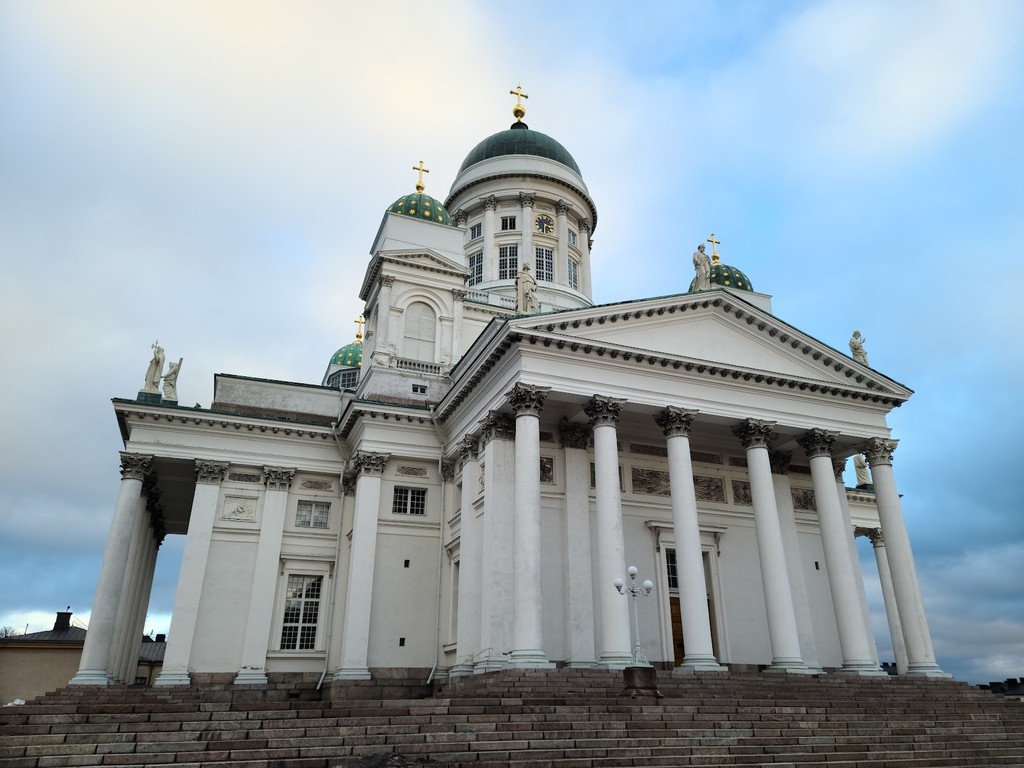
Helsinki Cathedral (Source: Google Maps)
Helsinki Cathedral, or Tuomiokirkko, is an iconic symbol of the city, completed in 1852. Designed by Carl Ludvig Engel, its neoclassical architecture features a striking white façade and green dome, making it a prominent feature of the Helsinki skyline. The cathedral is not just a place of worship but also a historical landmark, reflecting Finland's architectural evolution and cultural identity. The grand staircase leading up to the cathedral serves as a gathering place for locals and tourists alike, offering stunning views of the surrounding Senate Square and the city. The cathedral's interior is equally impressive, adorned with beautiful artwork and a serene atmosphere that invites reflection. It stands as a testament to Finland's history and its journey towards independence, making it a must-visit site for anyone interested in the country's past.
University of Helsinki Main Building
Located at Senate Square, this building is part of Finland's oldest and largest university, with a rich history dating back to 1640.
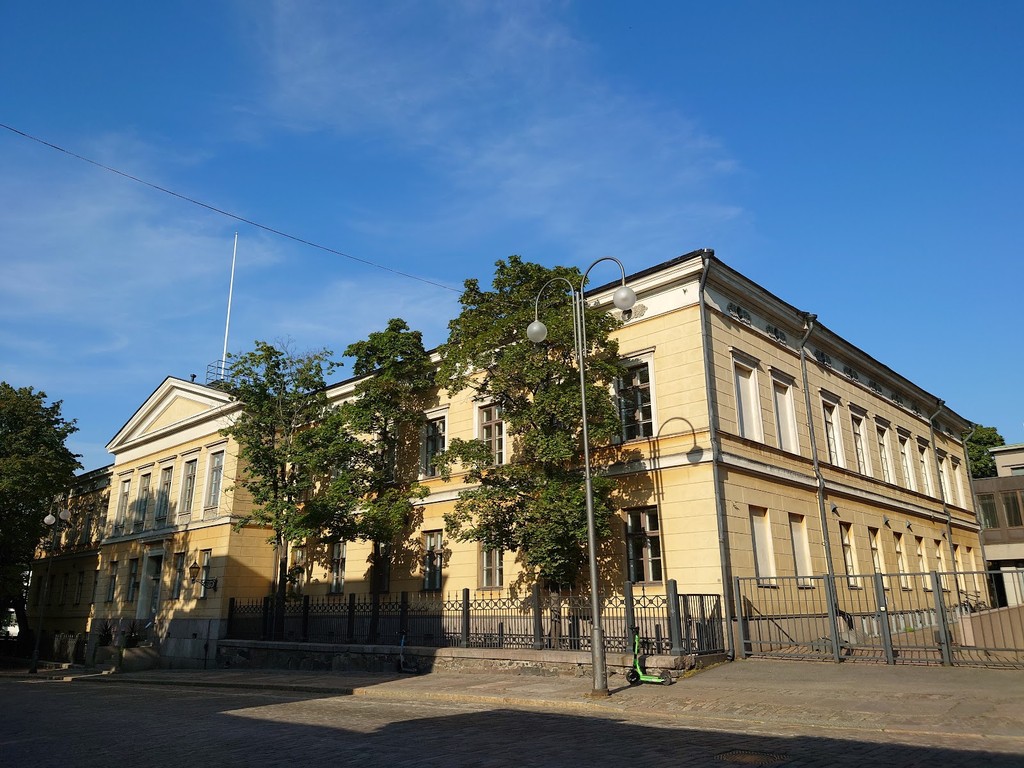
University of Helsinki Main Building (Source: Google Maps)
The University of Helsinki, founded in 1640, is Finland's oldest and largest university. Its Main Building, completed in 1832, showcases neoclassical architecture and is a significant part of the academic landscape. The university has played a crucial role in Finnish education and culture, contributing to the intellectual development of the nation. The building's grand façade and iconic clock tower are symbols of academic excellence and tradition. Inside, the university houses various historical artifacts and exhibits that reflect its long-standing commitment to education and research. The university's influence extends beyond academia, having shaped Finnish society and politics over the centuries. Notably, many prominent Finnish leaders and scholars have emerged from its halls, making it a cornerstone of Finland's cultural heritage.
Senate Square
Just a short walk from the cathedral, Senate Square is the city's central square, surrounded by impressive historical buildings and a great spot to soak in Helsinki's history.
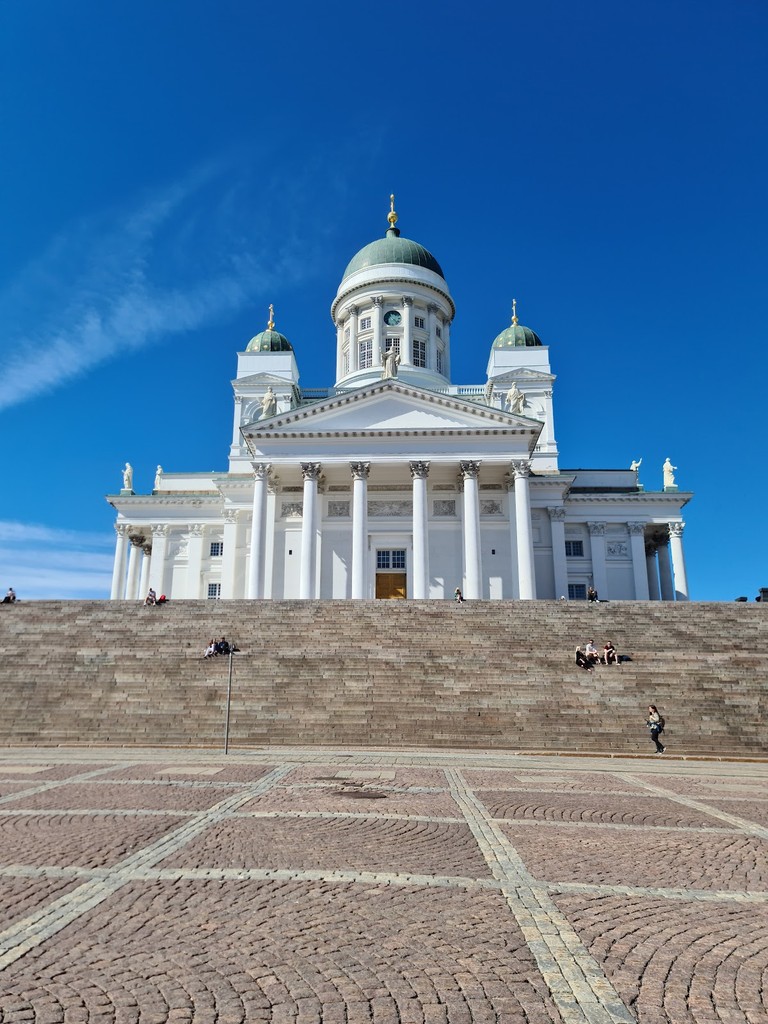
Senate Square (Source: Google Maps)
Senate Square is the heart of Helsinki, surrounded by remarkable neoclassical architecture, including the Helsinki Cathedral and the University of Helsinki Main Building. Designed by Carl Ludvig Engel, the square was completed in the early 19th century and serves as a significant historical and cultural site. It has been the backdrop for numerous events, celebrations, and protests throughout Finnish history. The square's design reflects the ideals of the Enlightenment, emphasizing order, symmetry, and harmony. At the center stands the statue of Tsar Alexander II, a symbol of Finnish autonomy during Russian rule. The square is a vibrant gathering place for locals and tourists, hosting markets, concerts, and festivals, making it a lively hub of activity. Its historical significance and architectural beauty make it a must-see destination for anyone exploring Helsinki.
Uspenski Cathedral
A short walk away is Uspenski Cathedral, the largest Orthodox church in Western Europe, showcasing Byzantine-Russian architecture.
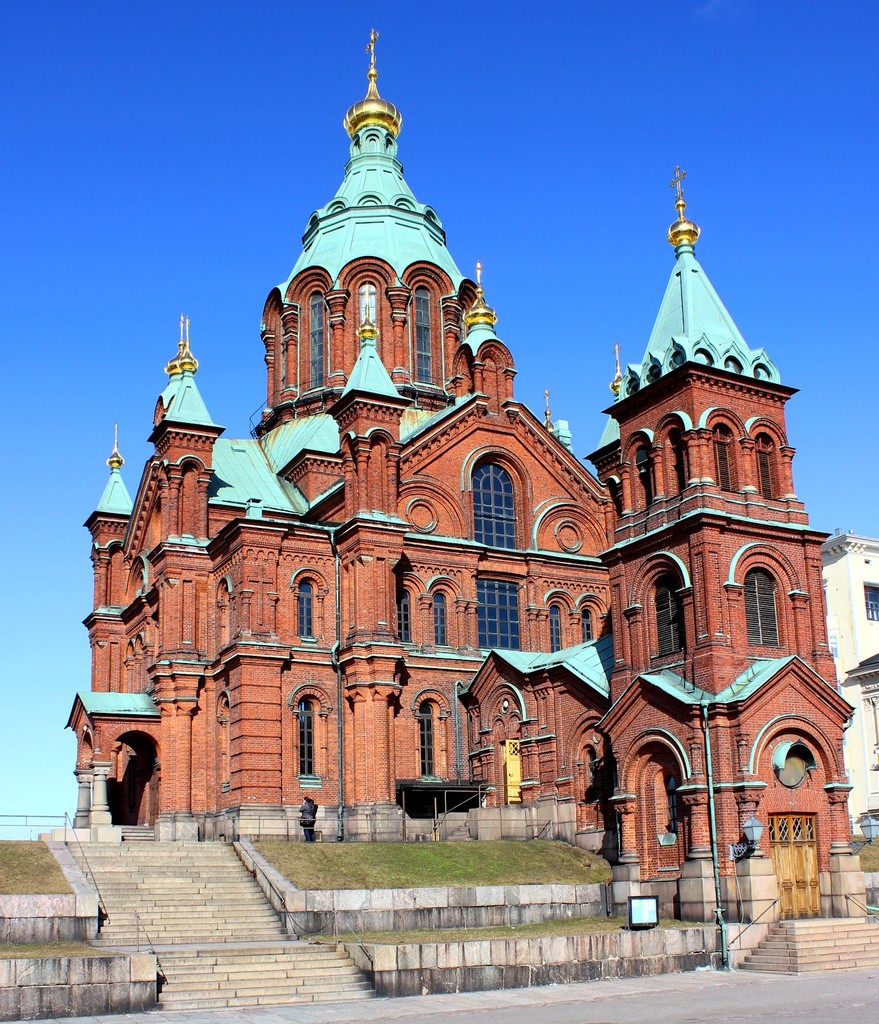
Uspenski Cathedral (Source: Google Maps)
Uspenski Cathedral, completed in 1868, is the largest Orthodox church in Western Europe. Its striking red brick exterior and gold domes are a stunning example of Byzantine-Russian architecture. Designed by architect Aleksei Gornostajev, the cathedral was built to serve the Russian Orthodox community in Finland, reflecting the country's complex history under Russian rule. Inside, the cathedral is adorned with beautiful frescoes and icons, showcasing the rich traditions of Orthodox Christianity. The serene atmosphere invites visitors to explore its spiritual significance. Uspenski Cathedral stands as a symbol of cultural diversity in Helsinki, representing the coexistence of different faiths and traditions. Its elevated position offers breathtaking views of the city, making it a popular spot for both worship and tourism. The cathedral's historical and architectural importance makes it a key landmark in understanding Helsinki's multicultural heritage.
Market Square (Kauppatori)
Head to Market Square, a bustling marketplace by the harbor, offering a glimpse into local life and a chance to sample Finnish delicacies.
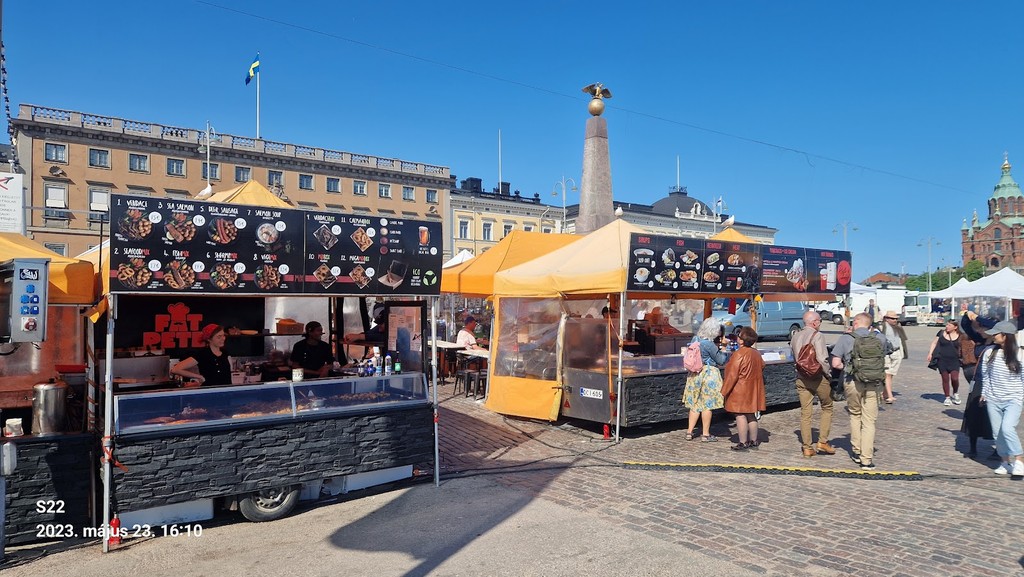
Market Square (Kauppatori) (Source: Google Maps)
Market Square, or Kauppatori, is a bustling marketplace located by the harbor, offering a vibrant glimpse into local life. Established in the 18th century, it has been a central hub for trade and commerce for centuries. The square is lined with stalls selling fresh produce, traditional Finnish foods, and handcrafted goods, attracting both locals and tourists. Visitors can enjoy fresh fish, berries, and pastries while soaking in the lively atmosphere. The square is also surrounded by historical buildings, including the Presidential Palace and the Old Market Hall, adding to its cultural significance. Market Square hosts various events and festivals throughout the year, celebrating Finnish culture and traditions. Its picturesque setting by the waterfront, combined with the aroma of local delicacies, makes it a must-visit destination for anyone looking to experience the essence of Helsinki.
Old Market Hall
Adjacent to Market Square, this historic market hall offers a variety of Finnish foods, perfect for a quick snack or to explore local flavors.
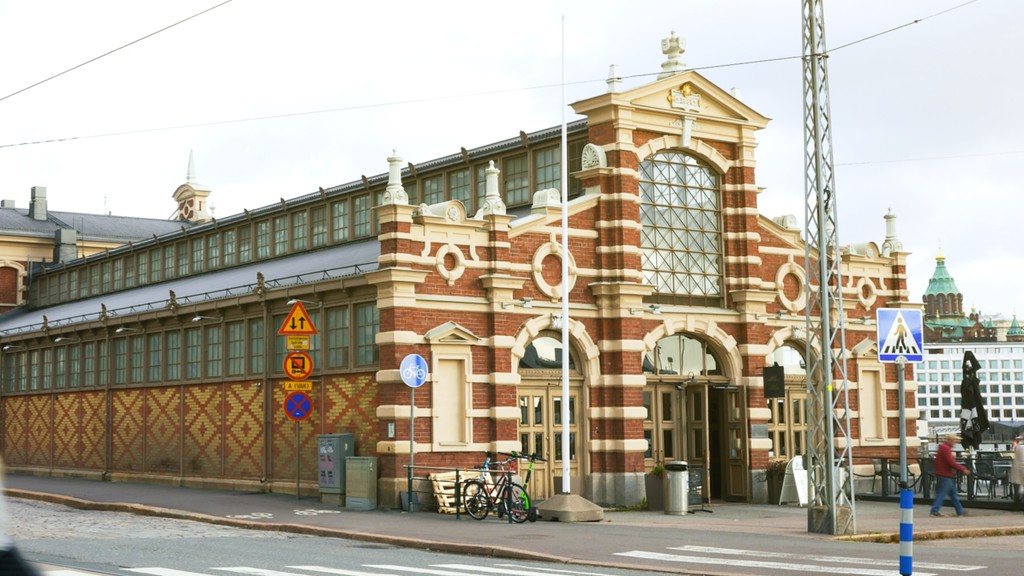
Old Market Hall (Source: Google Maps)
Esplanadi Park
Walk along Esplanadi, a beautiful park in the heart of Helsinki, ideal for a relaxing stroll amidst lush greenery and historic statues.
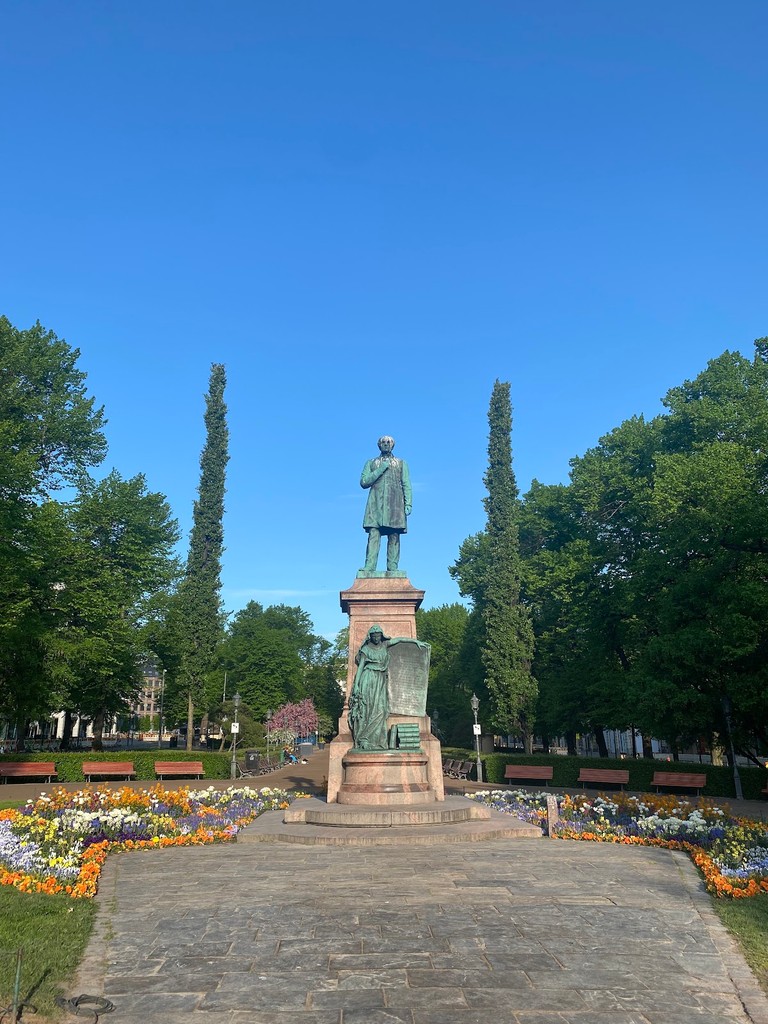
Esplanadi Park (Source: Google Maps)
Esplanadi Park is a beautiful green space in the heart of Helsinki, established in the 19th century. The park serves as a popular gathering place for locals and tourists, offering a serene escape from the city's hustle and bustle. Lined with trees, flowerbeds, and historic statues, the park is perfect for a leisurely stroll or a relaxing picnic. It features a range of outdoor cafés and restaurants, providing a vibrant atmosphere for socializing. The park is also home to various cultural events, concerts, and performances, showcasing Finnish art and music. Esplanadi Park reflects the city's commitment to green spaces and public enjoyment, making it an integral part of Helsinki's urban landscape. Its historical significance and natural beauty make it a cherished destination for anyone exploring the city.
Ateneum Art Museum
Nearby is the Ateneum Art Museum, part of the Finnish National Gallery, housing an extensive collection of Finnish art from the 18th century to the modern day.
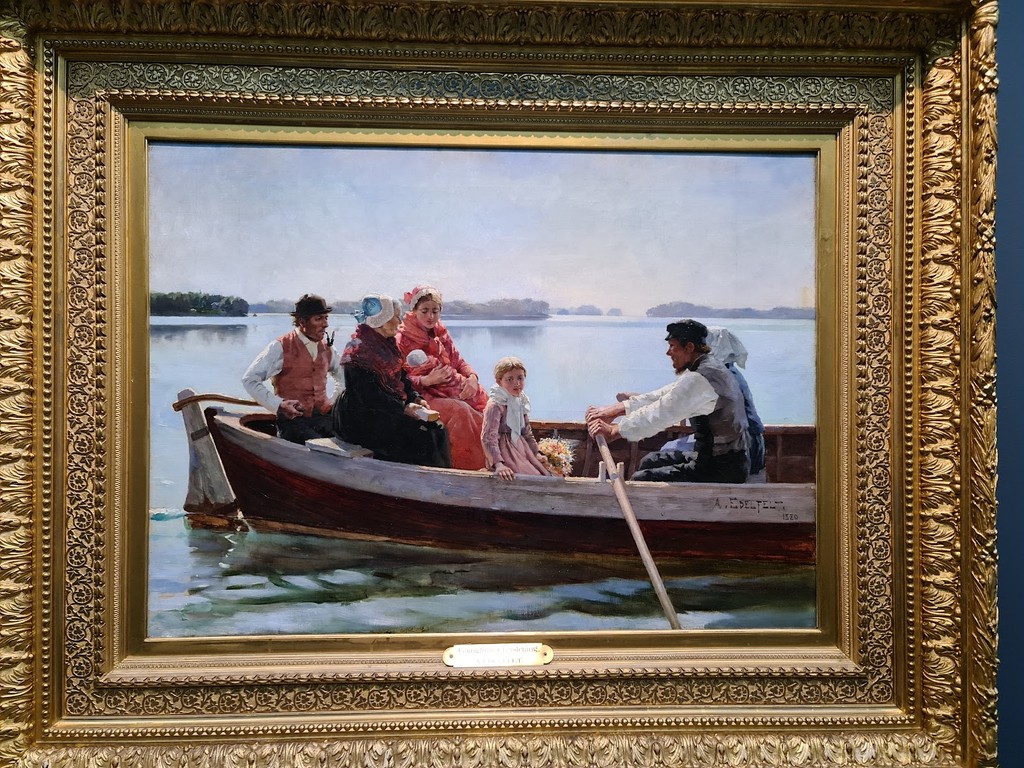
Ateneum Art Museum (Source: Google Maps)
The Ateneum Art Museum, part of the Finnish National Gallery, is a premier art institution housing an extensive collection of Finnish art from the 18th century to modern times. Opened in 1888, the museum is located in a neoclassical building designed by architect Theodor Höijer. Its collection includes works by renowned Finnish artists such as Akseli Gallen-Kallela and Eero Järnefelt, as well as international masterpieces. The museum plays a vital role in preserving and promoting Finnish cultural heritage, offering visitors insights into the evolution of Finnish art and its influences. In addition to its permanent collection, the Ateneum hosts temporary exhibitions and educational programs, making it a dynamic cultural space. The museum's architectural beauty and artistic significance make it a must-visit for art enthusiasts and anyone interested in Finnish culture.
Central Railway Station
A short walk away is the Helsinki Central Railway Station, known for its striking design by Eliel Saarinen and its significance in Helsinki's history.
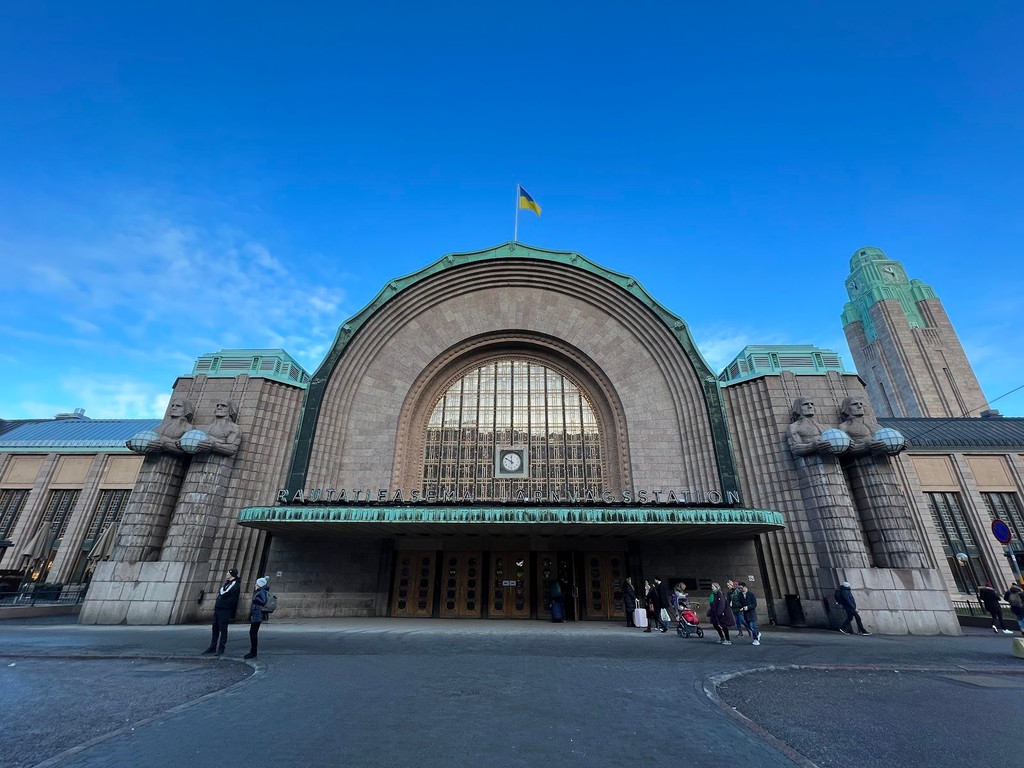
Central Railway Station (Source: Google Maps)
Helsinki Central Railway Station, designed by architect Eliel Saarinen and completed in 1914, is an architectural masterpiece and a vital transportation hub. The station's distinctive Art Nouveau style features a grand façade with impressive clock towers and granite lions guarding the entrance. It serves as a gateway to the city, connecting Helsinki with various domestic and international destinations. The station's interior is equally stunning, with high ceilings, intricate details, and spacious waiting areas. Its historical significance extends beyond transportation; it has witnessed pivotal moments in Finnish history, including the country's independence in 1917. The station is also a cultural landmark, hosting events and exhibitions throughout the year. As a symbol of Helsinki's modernity and progress, the Central Railway Station is a must-see for visitors exploring the city's rich architectural heritage.
Parliament House
Visit the Parliament House, the seat of Finland's government, admired for its impressive architecture and political importance.
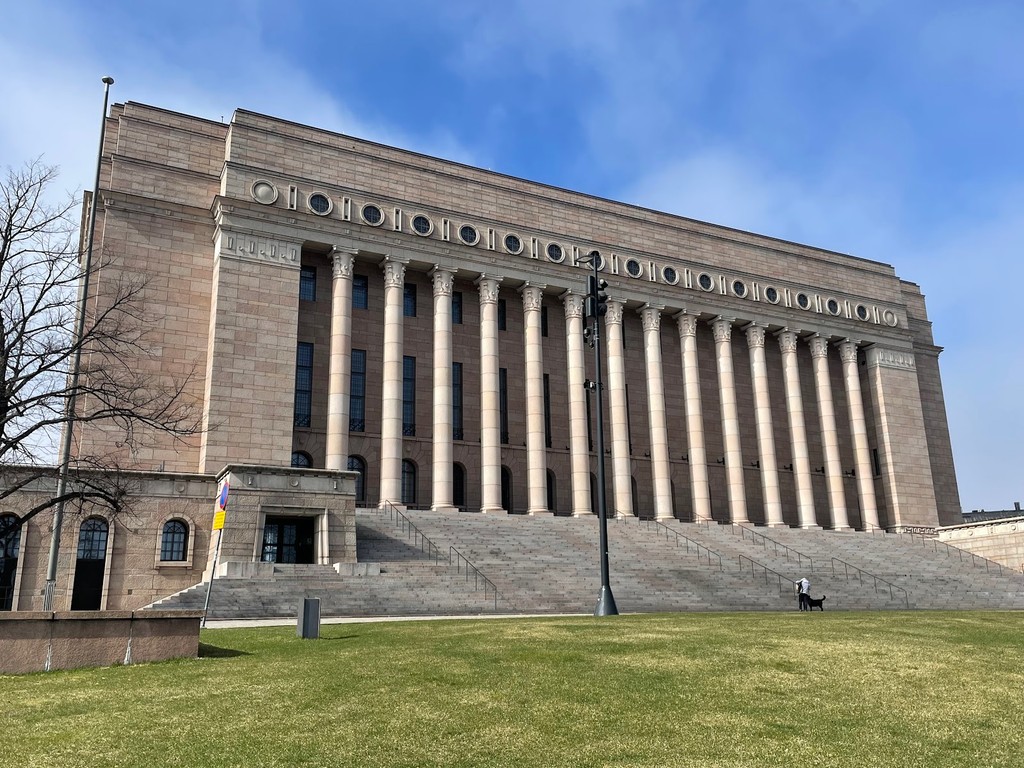
Parliament House (Source: Google Maps)
Parliament House, completed in 1931, is the seat of Finland's government and an architectural landmark in Helsinki. Designed by architect Johan Sigfrid Sirén, the building features a neoclassical style characterized by its impressive façade and grand staircase. It symbolizes Finland's democratic values and political heritage, housing the Parliament of Finland, where important legislative decisions are made. The interior is equally striking, with elegant chambers and halls that reflect the importance of governance. Visitors can explore the building's history through guided tours, gaining insights into Finland's political system and democratic processes. The Parliament House stands as a testament to the country's commitment to democracy and civic engagement, making it a significant site for anyone interested in Finnish politics and history.
National Museum of Finland
Continue to the National Museum, which offers a comprehensive overview of Finnish history from prehistoric times to the present.
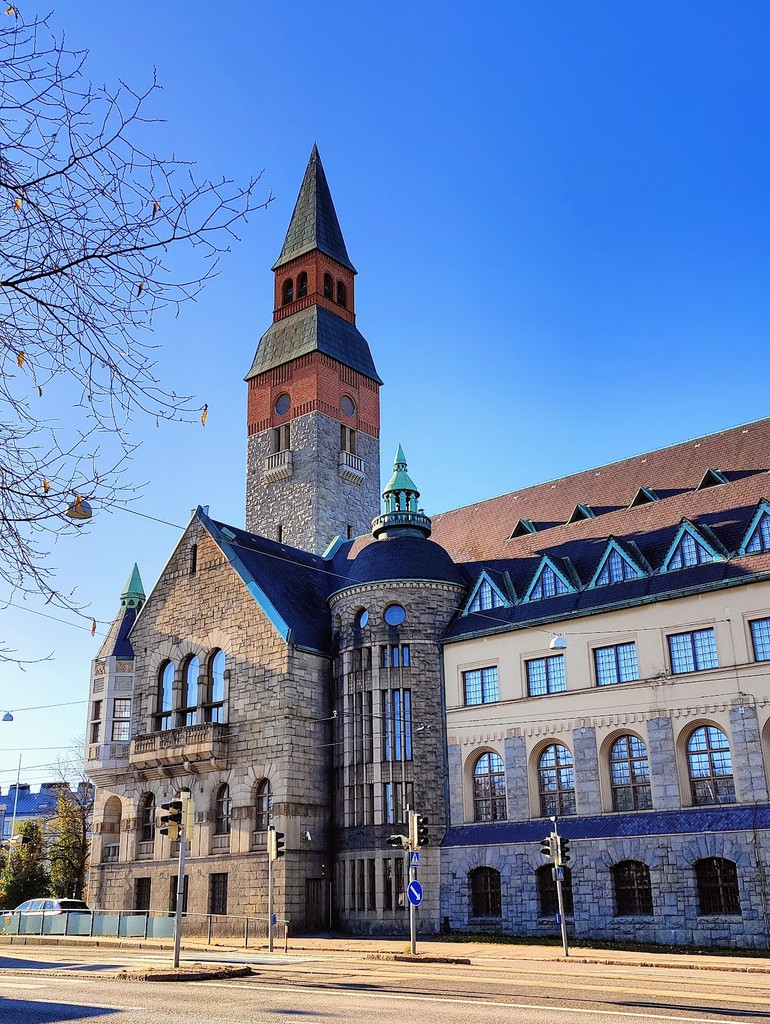
National Museum of Finland (Source: Google Maps)
The National Museum of Finland, opened in 1916, offers a comprehensive overview of Finnish history from prehistoric times to the present. Housed in a striking building designed by architect Eliel Saarinen, the museum showcases a diverse collection of artifacts, including archaeological finds, historical documents, and cultural exhibits. Its galleries explore various aspects of Finnish life, including traditional crafts, clothing, and art. The museum plays a crucial role in preserving Finland's cultural heritage and educating the public about its history. Special exhibitions and educational programs further enhance visitors' understanding of Finnish identity and history. The museum's architectural beauty and extensive collections make it a vital destination for anyone seeking to delve into Finland's past.
Temppeliaukio Church (Rock Church)
Conclude your tour at the Rock Church, a unique architectural marvel built directly into solid rock, offering a serene and awe-inspiring atmosphere.
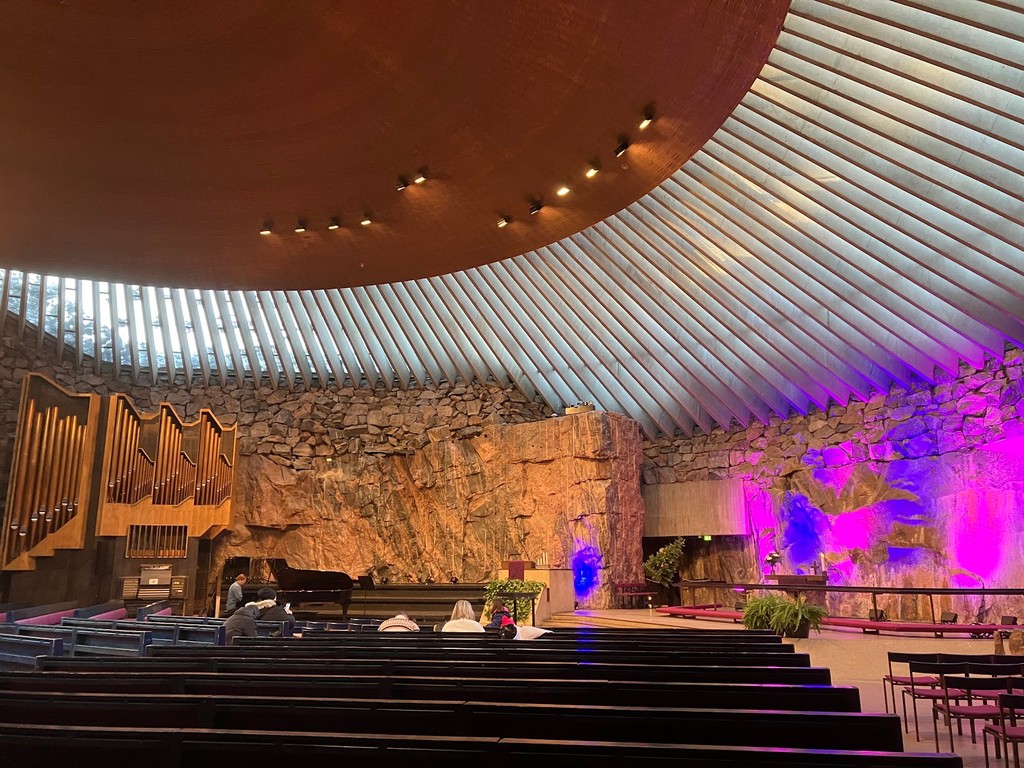
Temppeliaukio Church (Rock Church) (Source: Google Maps)
Temppeliaukio Church, also known as the Rock Church, is a remarkable architectural wonder carved directly into solid rock. Completed in 1969, it was designed by architects Timo and Tuomo Suomalainen, blending nature with modern design. The church features a stunning copper dome that allows natural light to illuminate the interior, creating a serene and contemplative atmosphere. Its unique construction showcases the raw beauty of the rock, making it a popular site for both worship and tourism. Temppeliaukio Church is renowned for its exceptional acoustics, hosting concerts and cultural events throughout the year. It stands as a symbol of Finland's innovative architectural spirit and its connection to nature, attracting visitors seeking a spiritual experience or a moment of tranquility.

Your travels, your rules.
Create your own Free Walking Tours.
Set your preferences, distances and anything you want to do or see.
Completely free, no payment required.